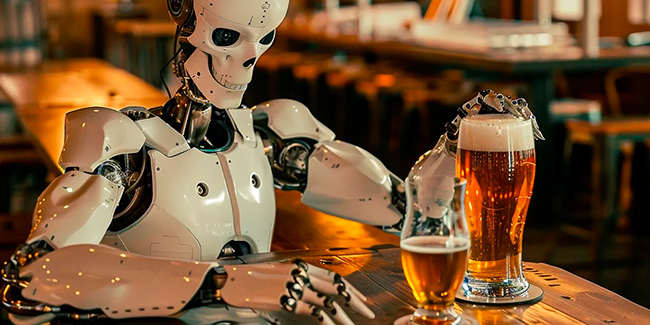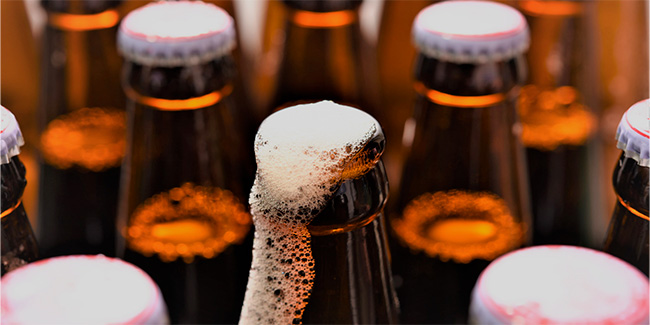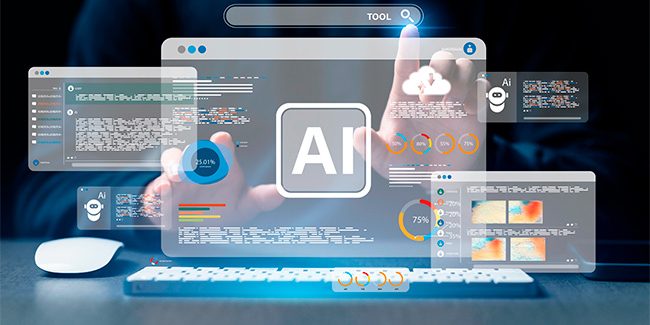

AI Usage in Brewing Beer: Unveiling the Secrets


Have you ever thought that AI can be connected to the process of brewing? Surprising, right? For some, brewing beer is a process that has sacred family value, while for others – it is the process of satisfaction and making money. Probably, you’re wondering how AI can be connected to brewing. Well, in this article, we’re going to unveil the secrets of AI usage in brewing beer.
Factors that led to AI Usage in Brewing Beer
What makes the beer market so rapidly changing? Nowadays, more and more brewers have started making craft beer, focusing more on quality and innovations. Craft breweries are all about unique flavors and traditional methods of brewing. Today, selling brews has become more challenging than ever, due to climate change and market competitiveness.
Brewers had a challenge: how to simplify the process of brewing beer and make it less expensive and more efficient. While crafting beer with exceptional taste is challenging, often requiring costly sensory-tasting panels, using artificial intelligence offers a great solution to simplify the process and enhance product development.
What’s the exact role of AI usage in brewing? In brewing beer, AI analyzes data and consumer preferences, and provides insights, making the industry more efficient and developing more sophisticated methods of evaluating taste and quality.
Utilizing AI in Brewing Beer: Methods and Applications
According to research published in Nature Communications, new AI models not only identify the possible consumer rate for the beer they taste. These models can identify the components to add to beer to make it more unique and earn a much better consumer rate.
It took 5 years and 250 beers for researchers to train models and make them work correctly. They measure chemical properties and flavor compounds, as these factors identify the taste of beer. After analyzing these details and 180, 000 reviews from the popular RateBeer platform, they created a big data set. This data set allowed researchers to train 10 learning-machine models that could predict the taste, smell and even mouthfeel of beer.
The researchers split the data into a training set and a test set to compare the models. When researchers trained each model with the training set, it became possible to predict the test set’s outcomes. By using these models, the researchers identified specific compounds that improve beer appreciation among consumers. For example, adding lactic acid, commonly found in tart sour beers, could enhance the freshness of other beer types. This way, it became possible to identify beer that was more likely to receive higher ratings.
Beer testing models outcome
After testing models, researchers asked them to tell the way beer may taste better. They made specific changes in flavor compounds, and blind tasting, and the beer taste became much better. Moreover, these models can create even alcohol-free beer with excellent taste the same way by analyzing compounds and reviews.
Additionally, these machine-learning models may go far ahead than just beer making. Furthermore, in the future, these models will extend to exploring food texture and nutrition, mixing various ingredients and flavors. Such an approach can make everyday food taste better and suitable for the specific tastes of people with different backgrounds and different cultures.
To sum up, using AI in different industries and sectors may be a handful of applications, as it makes changes to a lot of production processes. In beer brewing, it found its application due to research tests and approaches. AI is seeping into all areas of human life, sometimes even the unexpected, making positive changes and creating new possibilities. In the context of technological advancements, AI’s integration into brewing beer may seem unexpected yet transformative. As an IT expert and an IT company, Introduct understands the significance of AI’s role in various industries and develops along with new technologies.
More Articles

Artificial Intelligence in Software Engineering — A Real Threat for Developers? Artificial Intelligence in Software Engineering — A Real Threat for Developers?
In the age of Artificial Intelligence in Software Engineering, more and more developers face the problem of being able to stay relevant in their field. Developers' concerns about the future of their profession are justified and might seem like a situation where people fear new technology will overtake jobs.

AI Job Shift: Industries Job Market Transformation AI Job Shift: Industries Job Market Transformation
The topic of AI job replacement is widely discussed nowadays, as people worldwide are worried about possible jobs loss. Moreover, the rise of artificial intelligence has significantly changed many industries, shaking up job markets and how money flows. To find the perspective and ways to stay afloat, it becomes increasingly important to understand AI’s impact […]
